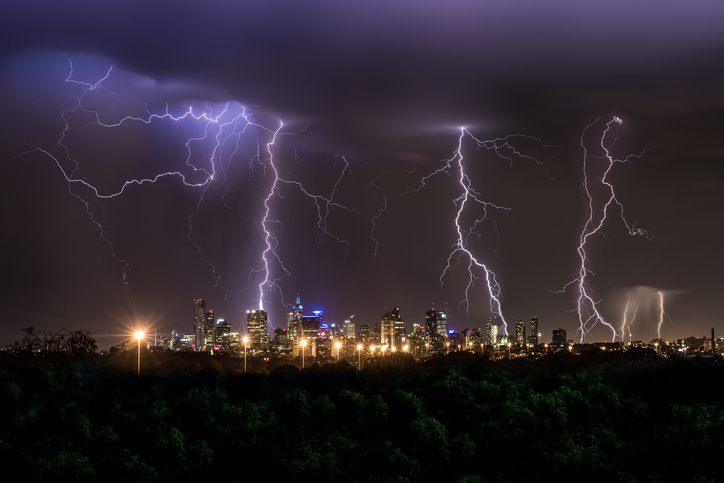
Victoria has been put on high alert for thunderstorm asthma after more than 200 people were admitted to hospital with asthma related symptoms in 24 hours — more than five times the normal amount. If you’re worried about how to protect yourself from thunderstorm asthma this high risk season, read on for all the information you need.
The warning across Victoria is expected to remain until Thursday evening when the risk is expected to lessen.
“We are seeing an increase in people suffering asthma symptom across parts of Victoria,” VicEmergency said.
“People may experience asthma symptoms or difficulty breathing due to the combination of thunderstorm activity and high grass pollen levels.”
Given it’s currently pollen season, and we’ve already seen multiple warnings these last few weeks (which is unusual), it’s a good idea to be across what to do when the next one occurs.
So, let’s dive into what thunderstorm asthma is and how to protect yourself from it.
What causes thunderstorm asthma?
Thunderstorm asthma is caused by a combination of thunderstorm weather (high temperatures, moist air and strong winds) and high pollen. As the storm forms, the grass pollen grains are swept up into clouds, where they absorb water and burst — releasing allergens that are small enough to enter your lungs and potentially trigger an asthma attack.
What are the symptoms of thunderstorm asthma?
Wheezing, chest tightness and difficulty breathing or coughing are all symptoms associated with thunderstorm asthma. If they escalate, they can be life threatening so it’s really important to seek medical help if you think you are experiencing an attack.
How can I protect myself from having an episode?
There’s no way to completely remove the risk of having an episode, but there are some steps recommended by Victoria’s Department of Health that you can take to mitigate that risk.
For starters, it’s important to be on top of using your inhaler throughout the year and especially spring, even if you’re feeling okay as this is important for prevention.

Researchers who looked into the Wagga Wagga thunderstorm asthma epidemic of 1997 found that people who have asthma and regularly used an asthma puffer were less likely to experience an asthma thunderstorm attack than those who had asthma but didn’t use their puffer regularly. This basically suggests that using your inhaler regularly can give you some protection from the risk of suffering a thunder asthma attack.
But even if you haven’t been using your puffer regularly, during a thunderstorm asthma warning you should always have your preventer medication and inhaler/puffer on hand. Make sure you have a current and personalised Asthma Action Plan so that you know what to do during an attack.
Stay indoors during thunderstorm asthma warnings if you can, and keep doors and windows closed. If you must go outside, try wearing a ventilator mask — it won’t be completely pollen-proof but it can help.
If you find that you’re having difficulty breathing and your inhaler is not fixing the issue, or your breathing is getting worse, don’t wait. Call Triple Zero and seek help immediately.
Image: iStock
The post Victoria’s Thunderstorm Asthma Szn Left Hundreds Hospitalised So Here’s How To Protect Yourself appeared first on PEDESTRIAN.TV .







